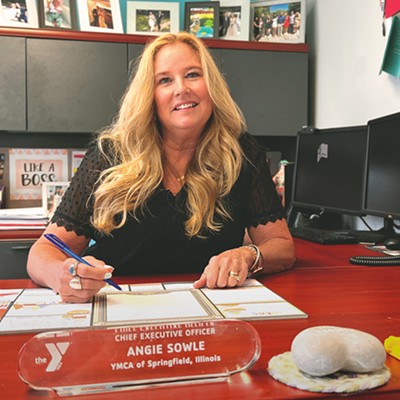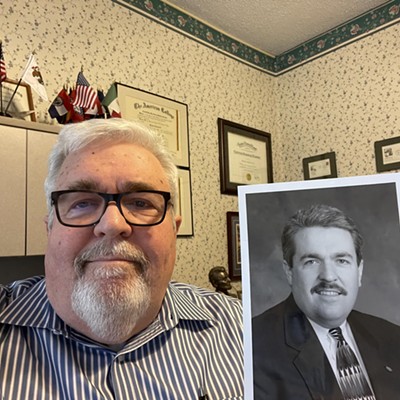The 100th anniversary of shrine giving
By Catherine O’Connor
2015 has marked the 100th anniversary of the establishment of the Ansar Shrine, one of five temples in Illinois which serve as regional headquarters in Rockford, Chicago, Peoria, Springfield and East St. Louis. The Springfield Shriners chose the name Ansar and received a charter in 1915 in a ceremony with the blessing of the Illinois legislature. They have operated as a social and charitable fraternal organization continuously since then.
Springfield was a different city in 1965 when Ansar celebrated its 50th anniversary by building a new Shrine Temple near Sixth St. and Cook. A commemorative book published at that time included a congratulatory note from then-Governor Otto Kerner, himself a Shriner. He joined prominent doctors, lawyers and business and professional leaders totaling 850,000 members nationwide, with the common goal of raising funds to support the 17 Shrine Hospitals for Children.
During the postwar era, many Springfield businesspeople joined fraternal organizations as a way to build networks and connect with other merchants and customers in the community. Today, with the advent of the Internet and other advances in technology, the purpose and culture around organizations like the Shrine has changed. What remains is the primary charitable function, supported by fundraising activities including Shrine monthly dinners, parades and family activities held throughout the year.
While many of us may not be able to make decisions about how our employer will donate or contribute to the community, the Shrine offers a structure that directs most of its member’s donations to its network of specialized children’s hospitals located throughout the country. Today there are 22 Shrine hospitals in the U.S. which have become world leaders in pediatric burn and orthopedic care. While such expert care is not free, it is provided at no cost to families because of the generous donations of Shrine members and their fundraising efforts. According to Chuck McEvers, who is the potentate or acting CEO of the organization, “nothing is more rewarding than to have someone stop you in the street and say that they or their child would not be able to walk now, if it weren't for their care that they received at a Shrine hospital.”
Since 1990, the Ansar Shrine has hosted the Royal Haneford Circus, which is the longest recurring event held at the Prairie Capital Convention Center. As Ansar’s single most important undertaking each year, the planning and operation of the circus is now like a “well-oiled machine that only works with the expertise and labor of our members,” according to Terry Petty, a past potentate who now serves as the recorder.
Numerous other fundraising activities over the years have involved the work of various ladies’ auxiliaries and events that bring Shriners and their families from throughout Illinois together. For example, a fundraising sale of fresh Wisconsin cheese and a Valentine’s Day “Love to the Rescue” emblem sale at gas stations and convenience stores were held to further support hospitals. Recently, the Shriners partnered with the Springfield Jaycees on a downtown pub crawl to benefit the St. Louis Shrine Hospital, which effectively used Facebook and Instagram posts to connect with those interested in being Shriners or being served by the Shrine.
According to Petty, this dedication to making fundraising efforts fun for Shriners has created a surprising force for good in communities. “We are proud that our hospitals have pledged to have every child who seeks care seen by a doctor within two weeks, regardless of the family’s ability to pay.”
Because modern media technology has enlarged individuals’ capacity to reach worldwide, it makes time spent in live interaction more precious. From another perspective, a greater percentage of professionals in the community may no longer own or manage their own businesses, instead working for larger corporations that leave them feeling isolated. According to McEvers, the Shrine membership includes people from a broad cross section of the community, who are united in the common goal of keeping the tradition alive.
One of the requirements to belong is that all Shriner members, known as “Nobles,” are affiliated with a local Masons lodge. However, not all Masons choose to become Shriners, according to Petty. This works as an informal vetting process, because each Mason’s lodge looks into the character and background of individuals before they are promoted to be a Third Degree Mason, an eligibility requirement to join the Shrine Temple. Petty points to the Masonic “obligation,” which stipulates that members don't use their affiliation as a Mason or Shriner to promote themselves but rather adhere to the time honored tradition of “brother helping brother.”
McEvers had a specific experience recently where his company, Great Western Trucking, needed product hauled to Memphis on short notice, and he was able to identify appropriate resources through his network of Shrine members. “If the person I’m talking to is a Mason or Shriner I know that I can trust their character. You like to support the people who support the same things you do.”
While many people identify them as guys in funny looking fez hats, riding scooters in crazy parade formation, the Shrine actually offers many other activities that engage members, their spouses, families and communities. For the 3,100 current members of Ansar there are 31 local clubs for members who live in the surrounding communities, including the New Salem Shrine Club in Petersburg and 19 special interest units. Under this umbrella are a variety of ladies’ auxiliaries and groups who serve as clowns, horsemen, or band members and marching units.
The new generation of Shriners is innovating with social media to encourage new members and make networking easier. There are growing number of clubs for active and retired law enforcement officers, those under 40 years old and those who are into brewing beer, according to Petty’s son, Rusty, now himself a Shriner.
Both the younger and elder Pettys agree that the Shrine’s time-honored message remains, “No one stands as tall as when they stoop to help a child.”
Catherine O’Connor wrote
Message in the Bottle, a history of
the early nineteenth century women’s reform movement in Illinois.

















